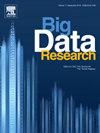基于深度关注动态表征学习网络的推荐系统评审建模
IF 4.2
3区 计算机科学
Q2 COMPUTER SCIENCE, ARTIFICIAL INTELLIGENCE
引用次数: 0
摘要
尽管在推荐系统中利用深度学习技术和文本评论进行了大量研究,但提高系统性能是一个有争议的问题。这主要是由于在学习用户-项目表示时面临的问题。一个问题是网络从评论中对动态用户-项目表示建模的能力有限。特别是,在序列到序列的学习模型中,由于被下一个序列覆盖,丢失先前复习序列的语义知识的可能性很大。另一个问题是如何有效地集成全局级和主题级表示,以提取信息内容并增强用户项表示。在这个整合过程中,现有的方法很难保持上下文的一致性,这导致了次优的表示学习,尤其是在试图捕捉更精细的细节时。为了解决这些问题,我们提出了一种新的推荐模型,称为深度注意动态表征学习(DADRL)。具体来说,我们使用潜在狄利克雷分配和基于动态调制器的长短期记忆来提取局部和动态全局表征。然后,我们引入一种注意融合方法,以上下文一致的方式整合这些表征,并构建信息丰富的注意用户-物品表征。我们将这些表示用于分解机器层来预测最终分数。在Amazon categories、Yelp和LibraryThing上的实验结果表明,与几种最先进的技术相比,我们的模型表现出优越的性能。我们进一步研究不同条件下的DADRL体系结构,以提供对模型所使用组件的见解。本文章由计算机程序翻译,如有差异,请以英文原文为准。
Deep attention dynamic representation learning networks for recommender system review modeling
Despite considerable research of utilizing deep learning technology and textual reviews in recommender systems, improving system performance is a contentious matter. This is primarily due to issues faced in learning user-item representations. One issue is the limited ability of networks to model dynamic user-item representations from reviews. Particularly, in sequence-to-sequence learning models, there appears a substantial likelihood of losing semantic knowledge of previous review sequences, as overridden by the next. Another issue lies in effectively integrating global-level and topical-level representations to extract informative content and enhance user-item representations. Existing methods struggle to maintain contextual consistency during this integration process, resulting in suboptimal representation learning, especially attempting to capture finer details. To address these issues, we propose a novel recommendation model called Deep Attention Dynamic Representation Learning (DADRL). Specifically, we employ Latent Dirichlet Allocation and dynamic modulator-based Long Short-Term Memory to extract topical and dynamic global representations. Then, we introduce an attentional fusion methodology to integrate these representations in a contextually consistent manner and construct informative attentional user-item representations. We use these representations into the factorization machines layer to predict the final scores. Experimental results on Amazon categories, Yelp, and LibraryThing show that our model exhibits superior performance compared to several state-of-the-arts. We further examine the DADRL architecture under various conditions to provide insights on the model's employed components.
求助全文
通过发布文献求助,成功后即可免费获取论文全文。
去求助
来源期刊

Big Data Research
Computer Science-Computer Science Applications
CiteScore
8.40
自引率
3.00%
发文量
0
期刊介绍:
The journal aims to promote and communicate advances in big data research by providing a fast and high quality forum for researchers, practitioners and policy makers from the very many different communities working on, and with, this topic.
The journal will accept papers on foundational aspects in dealing with big data, as well as papers on specific Platforms and Technologies used to deal with big data. To promote Data Science and interdisciplinary collaboration between fields, and to showcase the benefits of data driven research, papers demonstrating applications of big data in domains as diverse as Geoscience, Social Web, Finance, e-Commerce, Health Care, Environment and Climate, Physics and Astronomy, Chemistry, life sciences and drug discovery, digital libraries and scientific publications, security and government will also be considered. Occasionally the journal may publish whitepapers on policies, standards and best practices.
 求助内容:
求助内容: 应助结果提醒方式:
应助结果提醒方式:


